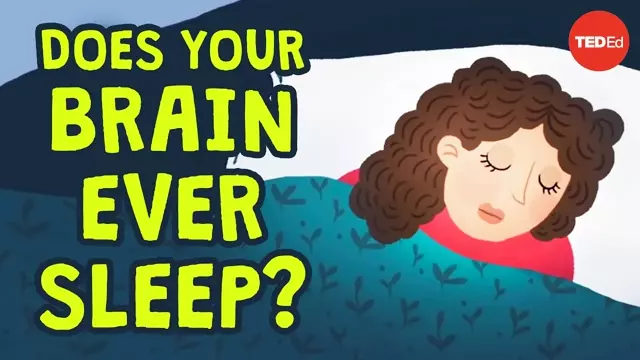2021-05-18
[public] 1.18M views, 39.6K likes, dislikes audio only
Discover the phenomenon known as asymmetrical sleep, where parts of an animal's brain are asleep while other areas remain active.
--
Many animals need sleep. But all of the threats and demands animals face don’t just go away when it’s time to doze. That’s why a range of birds, mammals, and even humans experience some degree of asymmetrical sleep, where parts of the brain are asleep and other areas are more active. So, how does it work? Masako Tamaki explores how animals' brains remain vigilant even at their most vulnerable.
Lesson by Masako Tamaki, directed by Biljana Labović.
Animated by Iva Ćirić, designed by Manja Ćirić.
Support Our Non-Profit Mission
----------------------------------------------
Support us on Patreon: http://bit.ly/TEDEdPatreon
Check out our merch: http://bit.ly/TEDEDShop
----------------------------------------------
Connect With Us
----------------------------------------------
Sign up for our newsletter: http://bit.ly/TEDEdNewsletter
Follow us on Facebook: http://bit.ly/TEDEdFacebook
Find us on Twitter: http://bit.ly/TEDEdTwitter
Peep us on Instagram: http://bit.ly/TEDEdInstagram
----------------------------------------------
Keep Learning
----------------------------------------------
View full lesson: https://ed.ted.com/lessons/can-you-be-awake-and-asleep-at-the-same-time-masako-tamaki
Dig deeper with additional resources: https://ed.ted.com/lessons/can-you-be-awake-and-asleep-at-the-same-time-masako-tamaki#digdeeper
Animator's website: https://ivaciric.com/
Designer's website: https://www.behance.net/manjaciric
----------------------------------------------
Thank you so much to our patrons for your support! Without you this video would not be possible! Mark Byers, Avinash Amarnath, Xuebicoco, Rare Media, Rayo, Po Foon Kwong, NinjaBoffin, Jesse Jurman, Josue Perez Miranda, Scott Markley, Elija Peterson, Ovidiu Mrd, Xavier dupont, paul g mohney, Aravind Battaje, Nathan Giusti, Helen Lee, Anthony Benedict, Karthik Balsubramanian, John Hong, Annastasshia Ames, Amy Lopez, Vinh-Thuy Nguyen, Liz Candee, Kathryn Vacha, Ugur Doga Sezgin, Anthony Arcis, Chung Wah Gnapp, Karmi Nguyen, Yelena Baykova, Harshita Jagdish Sahijwani, Nick Johnson, Carlos H. Costa, Roberto Patrick, Les Howard, Jennifer Kurkoski, Ryan B Harvey, Abhishek Bansal, Akinola Emmanuel, Jose Arcadio Valdes Franco, Karl Laius, JY Kang, Heidi Stolt, Alexis Hevia, Christina Salvatore, Karlee Finch, Michael Goldberg, Denise A Pitts, Doug Henry and Kristiyan Bonev.
/youtube/video/j5Sl8LyI7k8
/youtube/video/j5Sl8LyI7k8
/youtube/channel/UCsooa4yRKGN_zEE8iknghZA
/youtube/video/BN9yqF6Um98

